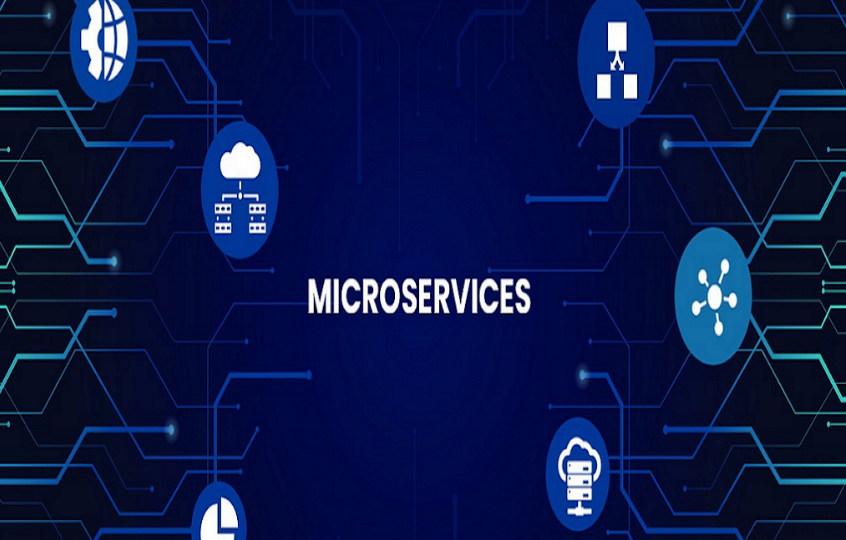In the digital age, it is more vital than ever to pay consideration to security concerns to preserve the privacy of one’s data, in which we continuously share information online.
There is still certain security problems related to the usage of microservices, although many businesses have adopted their use since microservices provide amazing advantages. It is essential to give careful consideration to these concerns to guarantee that the data safeguarding system will function properly whenever it is called upon. Architects and programmers are now dealing with the security problems that come along with the implementation of microservices.
The security of microservices is a complicated subject that has to be approached meticulously. Microservice designs provide many advantages, including agility, accessibility, and resiliency; however, these advantages come at the expense of security. In this blog post, we will discuss some of the mysteries of microservice security, along with the answers to those problems and the best practices that have to be used when developing systems that are built on microservices.
Concerns and Risks with the Security of Microservices Development
One of the most critical problems that developers must overcome is worries and hazards related to security during microservices development. Every single microservice has its communication channel, and if even one of these channels is breached, it might result in a data leak or possibly a total failure of the system as a whole.
When compared to programs that are built on monolithic platforms, microservices often have a higher attack surface area, and the rapidity with which they are produced might lead to a greater amount of weaknesses. It is possible for microservices for a high risk of being compromised if these development problems are ignored.
The usage of APIs in a microservices architecture is a topic that is often voiced. While application programming interfaces (APIs) make it simpler for microservices to communicate with one another, often also leave APIs open to threats such as cross-site scripting (XSS), cross-site request forging (CSRF), and SQL injection.
Difficulties That Developers Experience When Building Application Security
1. Attack Surface
When it comes to the development of apps, it is essential to give some thought to the architecture that will be used in the process. The microservices architecture is a common method, and it entails partitioning an application into several smaller components that operate independently of one another. Each microservice has a unique set of extra access points and separately processes access requests. It is important to work on security measures across all infrastructure levels of a microservice app to provide a trustworthy and safe environment for users. This involves safeguarding not just the program nonetheless even the network and the server it resides on.
2. DevOps Implementation
Throughout the whole of the application lifespan, microservices call for more coordination between the teams responsible for app expansion and IT (DevOps). Both groups require to get a solid comprehension of all the procedures that are involved to successfully mitigate any security threats. Unfortunately, close to 85 percent of all companies said that they had difficulties while attempting to apply DevOps.
At each level of development, Processes for continuous development as well as distribution, and installation (CI/CD) as well as the code which has been created must be subjected to rigorous testing by the DevOps teams. This will guarantee the app is secure.
3. Control of Access via Microservices
Access control is an essential feature that must be involved in any design for microservices. When it comes to the designing of microservices, there are many distinct avenues that one might pursue to implement access control. Utilizing a centralized access control system is one way that may be used. All decisions about access control are determined by a centralized system at this location.
Another method is to implement a distributed access control system, in which case every microservice would be responsible for managing its access control. It is essential to take into account aspects such as the scale and intricacy of your microservices architecture to make an informed decision on the access control technique to use.
4. The Practice of Logging is no longer Efficient
The logging of monolithic programs is an outdated approach that has been in use for a considerable amount of time. But this time-honored approach to logging does not function well with systems that are built on microservices. This is because systems that are built on microservices include stateless, handed-out, and self-contained services that have been constructed using a variety of different platforms.
To guarantee efficient logging, your application must have the capability of combining logs from several different platforms and services and connecting with the occurrences that occur across those platforms.
5. Polyglot microservices architecture
In recent years, microservices architecture has seen a rise in popularity, and a polyglot microservices architecture extends this trend one step further by enabling individual microservices to be constructed using a variety of programming languages and technology stacks. This kind of design is referred as ”polyglot” microservices architecture. This may have many beneficial effects, including enabling teams to use the tools of their choice and making it simpler for organizations to incorporate new technologies as they become available. In addition to this, the polyglot microservices design makes it simpler to grow and manage programs.
6. Deploy Defense-in-Depth approach
The Defense-in-Depth is a technique to cyber security that protects against possible cyber-attacks by using many levels of security controls. This strategy assures that even if one layer of security is hacked, there are additional levels in place that will stop a hacker from obtaining access to sensitive data. Firewalls, anti-virus software, intrusion detection systems, and access restrictions are all examples of possible components for these tiers. To do this, vulnerability evaluations and penetration analyses may need to be carried out to locate any possible vulnerability in the security layers.
7. Traditional methods of logging become inefficient
The new environment for DevOps microservices is very dispersed and decentralized. Because of the decentralized nature, lack of state, and inherent independence of microservices, there will always be an increase in the number of logs. The problem with this situation is that additional logs provide a risk of hiding newly emerging problems. This is a difficulty.
Logs need to be sent from each of the servers where microservices are operating to a single, external place so that they may be centralized. This becomes crucial when microservices are running on several hosts. User logging needs to correlate events across several, possibly different platforms for microservices security to be successful. It needs an additional standpoint to watch from, that is autonomous from any one API or service.
Bottom Line
In conclusion, ensuring the safety of microservices development is an essential component that must not be neglected. The adoption of microservices architecture may provide numerous advantages to developers, but it also raises security issues that need to be addressed. These risks need to be handled as well as being something that needs to be included in each facet of the building process, implementation, and ongoing upkeep of your microservices.













